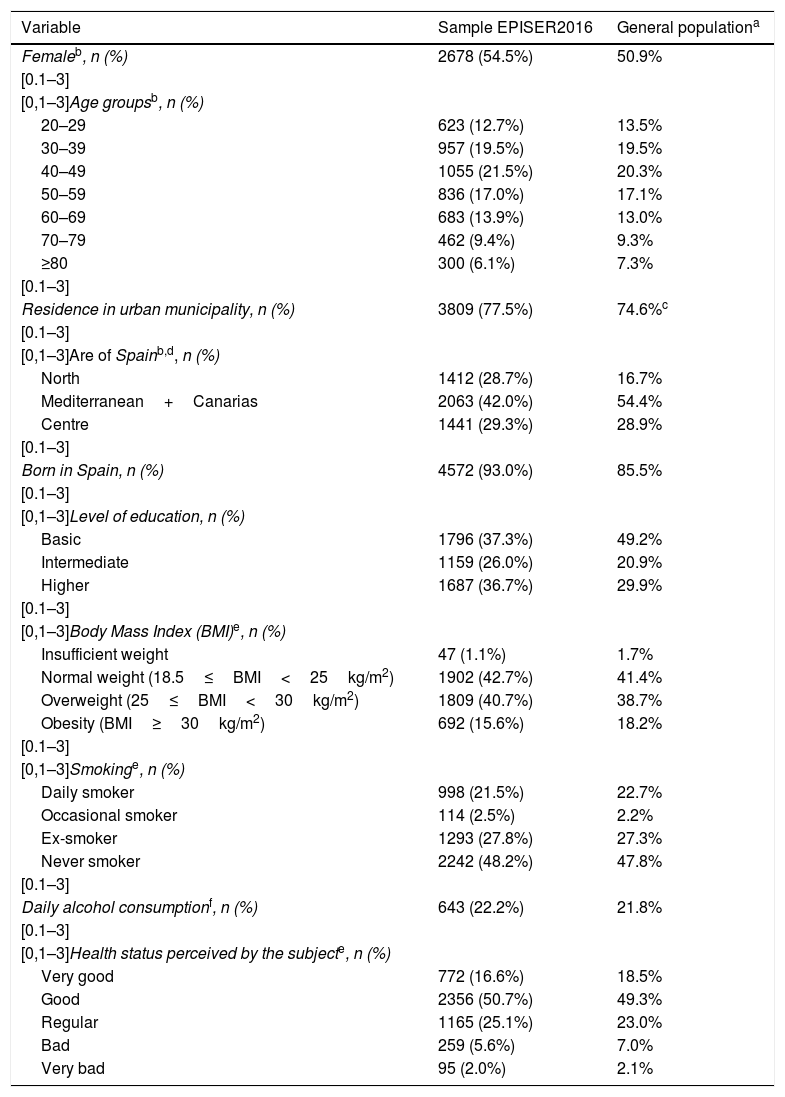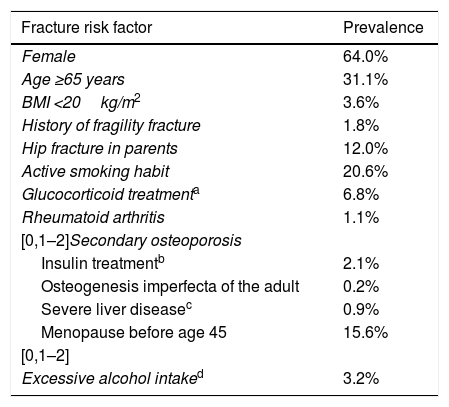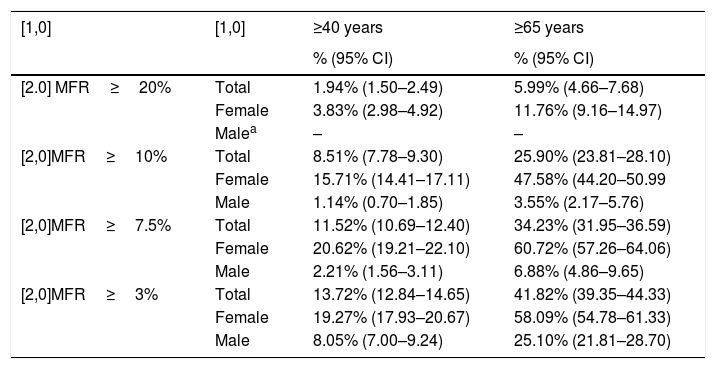To analyse the risk of fracture calculated by FRAX and the frequency of high risk of fracture in the general population in Spain.
MethodsEPISER2016 is a multicentre cross-sectional population-based study of the prevalence of rheumatic diseases in the adult population in Spain. 3154 subjects aged ≥40 years 1184 men and 1970 women were selected by stratified random sampling. The questions related to fracture risk factors were asked by telephone survey. The risk of major osteoporotic fracture MOFR and hip fracture HFR were calculated with the Spanish version of the FRAX tool, without the inclusion of bone mineral density. To define high fracture risk, the MOFR≥20%, MOFR≥10%, MOFR≥7.5% and HFR≥3% thresholds were used.
ResultsThe median (interquartile range) of the MOFR was 2.61% (1.55–6.34%) in women and 1.67% (1.15–2.87%) in men, whereas that of the HFR was 0.39% (0.14–1.86%) and 0.18% (0.07–0.77%). 3.83% of women and no men had a MOFR≥20%; 15.71% and 1.14% had a MOFR≥10%; 20.62% and 2.21%, a MOFR≥7.5%; and 19.27% and 8.05%, an HFR≥3%. In women aged 65 and over, the HFR was high in 58.09%.
ConclusionsEPISER2016 enabled us to establish the risk of fracture calculated by FRAX and the prevalence of high risk of fracture in the general population according to the different thresholds used in Spain.
Analizar el riesgo de fractura calculado por FRAX y la frecuencia de alto riesgo de fractura en la población general en España.
MétodosEPISER2016 es un estudio transversal multicéntrico de base poblacional de la prevalencia de las enfermedades reumáticas en población adulta en España. 3.154 sujetos de edad igual o superior a 40 años (1.184 hombres y 1.970 mujeres) se seleccionaron mediante muestreo aleatorio estratificado. Las preguntas relacionadas con los factores de riesgo de fractura se realizaron mediante encuesta telefónica. El riesgo de fractura principal (RFP) y de cadera (RFC) se calcularon con la versión española de la herramienta FRAX, sin la inclusión de la densidad mineral ósea. Para definir alto riesgo de fractura, se utilizaron los umbrales RFP≥20%, RFP≥10%, RFP≥7,5% y RFC≥3%.
ResultadosLa mediana (rango intercuartílico) del RFP fue 2,61% (1,55–6,34%) en mujeres y 1,67% (1,15–2,87%) en hombres; la del RFC fue 0,39% (0,14–1,86%) y 0,18% (0,07–0,77%). El 3,83% de las mujeres y ningún hombre tenían un RFP≥20%; el 15,71% y el 1,14% tenían un RFP≥10%; el 20,62% y el 2,21%, un RFP≥7.5%; y el 19,27% y el 8,05%, un RFC≥3%. En las mujeres de 65 años o más, el RFC fue alto en el 58,09%.
ConclusionesEPISER2016 nos ha permitido conocer el riesgo de fractura calculado por FRAX y la prevalencia de alto riesgo de fractura en la población general según los diversos umbrales utilizados en España.













